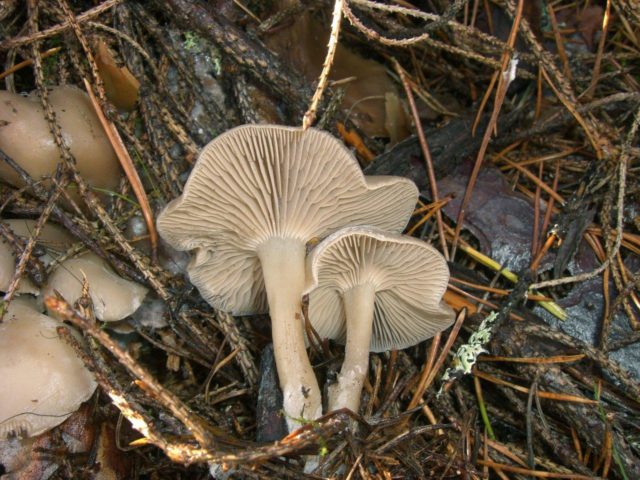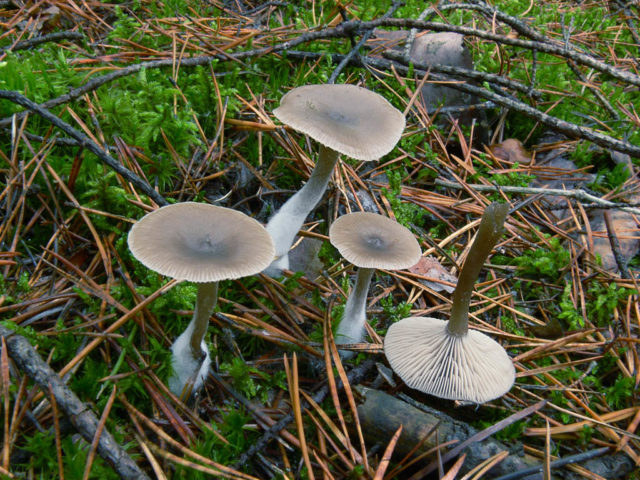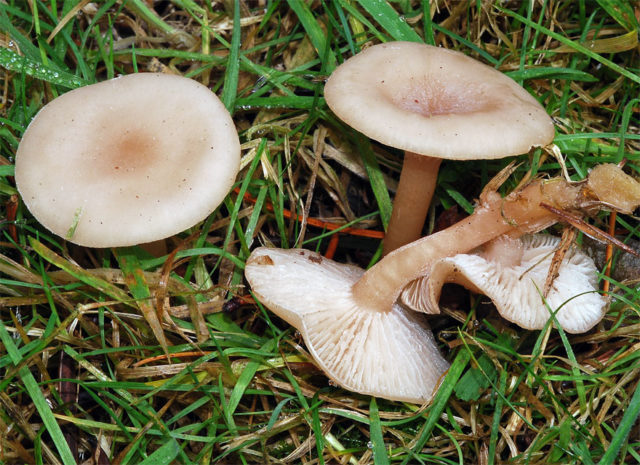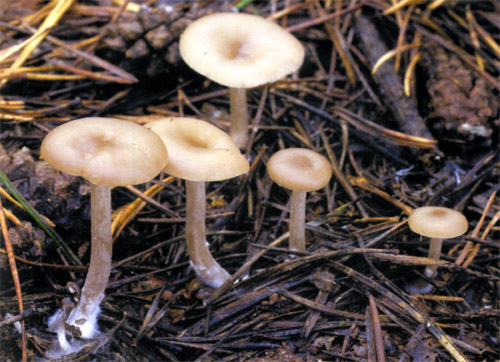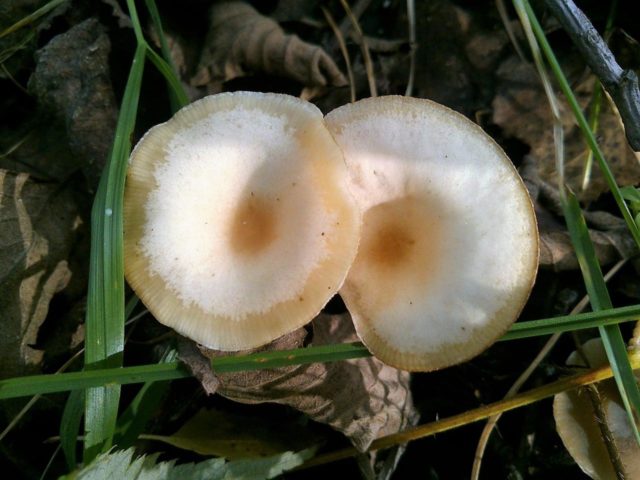Content
A weak-smelling talker is a lamellar mushroom. Belongs to the Trichomolov family, the genus Klitocybe or Govorushki. In Latin, Clitocybe ditopa. It is called weakly smelling for its weak mealy taste and smell. In some sources there is information that the mushroom can be eaten. But most experts warn: it is inedible.
Where weak-smelling talkers grow
A weak-smelling talker - an inhabitant of shady mixed, mainly broad-leaved forests, as well as spruce and pine forests. Prefers soils saturated with nitrogen. Occurs in rare, few groups. It is a saprotroph. Grows on a litter of fallen needles and foliage.
The distribution area is the northern latitudes of the planet. In our country, it is most often found on the territory of the Republic of Komi and Karelia, in the northern regions of Siberia.
The species belongs to late mushrooms. This means that ripening occurs in late autumn, from mid-November, and even in the first weeks of winter. The peak of growth falls in the period from December to January.
What weak-smelling talkers look like
The hat is medium in size, about 6 cm in diameter. In young specimens, it has a convex shape. As it develops, it quickly opens up, transforms into a funnel-shaped or flat one. The edge of the cap is first tucked up, gradually becomes smooth and wavy.
Cap color options - brown, beige, grayish brown. It is covered with a white or gray waxy coating. In the center of the cap, the color is always darker than at the edges. When the fruiting body begins to dry out, its color changes to gray-beige. The pulp is loose and often watery, grayish, has a flourish taste and smell. In adult specimens, it becomes more rigid.
The stem is smooth, thin, hollow, 1 cm in diameter and about 6 cm long. Located in the center. It is flattened or cylindrical in shape. Its color coincides with the color of the cap or is slightly paler. At the base of the peduncle there is a whitish pubescence.
The species belongs to lamellar mushrooms. Its spores are found in frequent thin gray plates. Spores are smooth and colorless. They can be spherical or elliptical in shape.
Is it possible to eat weak-smelling talkers
There is no exact information about whether the weak-smelling talker is suitable for eating, how toxic it can be. It is believed that it is capable of causing human poisoning. And if you eat a large amount, the harm to your health can be very serious.
Lovers of quiet hunting bypass the mushroom also for the reason that it has poisonous counterparts that are dangerous to humans.
How to distinguish weak-smelling talkers
The mushroom has an external resemblance to the following representatives of the genus Clitocybe:
- Fragrant talker. Conditionally edible mushroom, characterized by an earlier fruiting period and a more yellow tint of the cap.
- Talker Lange. You cannot eat it.It does not have a white wax coating. The edges of its cap are ribbed rather than smooth or wavy; the spores are larger.
- The talker is pale-colored. Inedible specimen with dark ash or gray-brown pitted cap.
Conclusion
Weak-smelling talker is a mushroom known to the inhabitants of northern latitudes. Being poorly studied in terms of toxicity and similar to many inedible or conditionally edible species, it is not suitable for consumption, and it does not represent any culinary value. Some mushroom pickers note that the mushroom tastes like validol.
